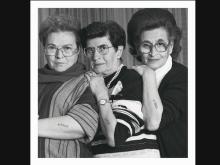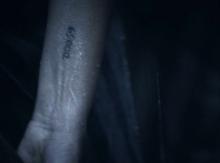Genocide
GENOCIDE, Arnold Schwartzman, USA 1982
The Oscar-winning documentary GENOCIDE (1982) opens with an animated scene that contains an indirect use of the symbolic close-up shot in the sequence showing children in Auschwitz presenting their Number Tattoos. Therefore, it matches references to two symbolic objects that represent the process of dehumanisation by reducing people to numbers: the list and the Number Tattoo. The animated sequence begins with a panning shot along mostly consecutive numbers in a vertical shape. This is an indirect reference to the lists used by the Germans for identifying and registering the Jewish population during the process of deporting them to killing sites and extermination camps in Eastern Europe. Then the panning stops, and all but one number is erased. It represents an individual victim. An animated zoom-out shows how the number on the list transforms into a number tattooed on a human arm. During the zoom-out, another iconic trope from visual Holocaust memory is attached to the composition: barbed wire entwines around the tattooed arm. At the end of the sequence, the viewer sees an outstretched hand in an accusatory pose. The barbed wire also alludes to Tefillin, the leather straps used by religious Jews for prayer. This religious connotation, which closely connects the Number Tattoo with Jewish victims, is even emphasised by a superimposition that matches the outstretched animated hand with a Yad (Hebrew: hand), a Jewish ritual pointer used for the reading of the Torah.
Compiling and condensing these different visual references into a composite symbolising Jewish suffering during the Holocaust, the animated opening scene of GENOCIDE utilises the close-up shot of the Number Tattoo and other visual tropes for iconization.





